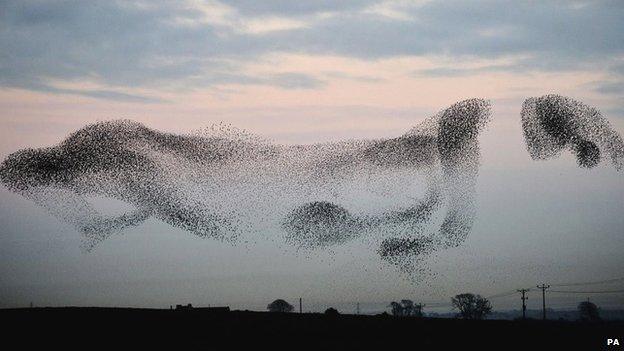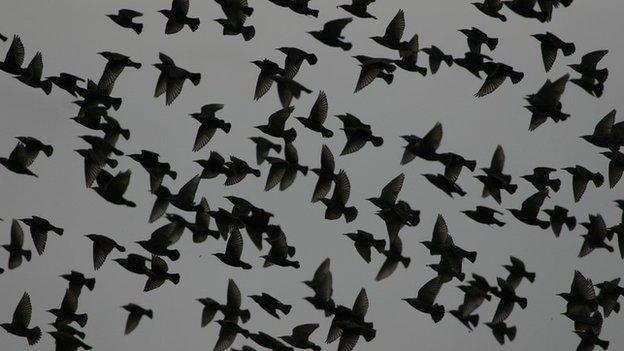Mysterious starling murmuration secrets unlocked?
- Published
- comments

Murmurations can involve up to 50,000 birds or more
A starling murmuration is an extraordinary sight.
Seen at dusk the sky darkens as thousands of birds flock to form complex shapes overhead - the only sound the beating of thousands of pairs of wings and the soft splot of droppings meaning a visit to the car wash and an umbrella if you get up close.
I'll never forget the first time I filmed one, but for such an amazing natural spectacle we know surprisingly little about why they happen and what they are for.
For the most part it's mathematicians and physicists who have carried out most of the research looking at the patterns and practicalities of how thousands of birds avoid smashing into each other.
Simple survey
But there's a bit of a gap in our biological knowledge explaining why murmurations actually occur.
Now the University of Gloucestershire is appealing for our help in trying to reveal the secrets of the murmuration.
It's the sort of research that simply wasn't possible until a few years ago.
There's a simple online form, external that you can fill in on your smartphone while out watching a starling flock.

The more information they gather the more the researchers can start to understand what's going on
You enter time, date and location and then some extra information like the weather and even if there are predators nearby. The only proviso is if you see the same flock on several nights in a row then do fill out another, separate report.
Ballet of the skies
You can even make an estimate of the numbers of birds, although given murmurations can involve up to 50,000 birds or more the researchers know they won't be accurate to the last bird.
You can find the survey at www.surveymonkey.com/s/starlings, external
The more information they gather the more the researchers can start to understand what's going on.
Popular theories for murmurations suggest they are a way to confuse and avoid predators, a way to keep warm or just a massive signpost in the sky for a safe place to roost.
With the help of the University of Gloucestershire, the Society of Biology, external and you, we can start to really understand this amazing ballet of the skies for the first time.